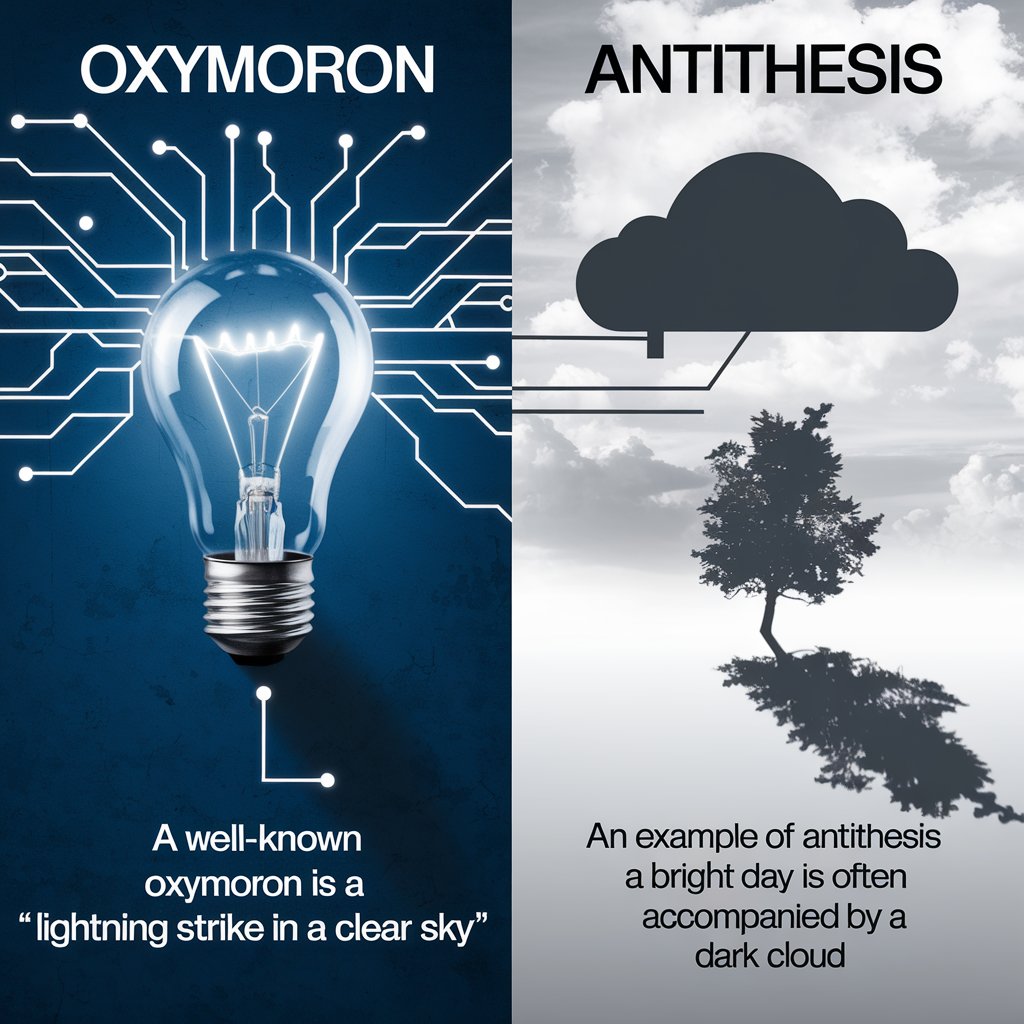What is Oxymoron?
Among oxymoron and antithesis, oxymoron is a literary device that combines two seemingly contradictory words to create a new, thought-provoking meaning. This technique is often used in poetry, literature, and everyday speech to convey complex ideas in a compact form.
Examples of Oxymoron
Some common examples include:
- Bittersweet – Something pleasant yet painful.
- Deafening silence – An overwhelming silence.
- Living dead – A paradoxical description of zombies or metaphorical exhaustion.
- Act naturally – A contradictory instruction to behave in an unforced manner.
- Jumbo shrimp – A humorous contrast between size and species.
Origins of Oxymoron
The word oxymoron has Greek origins, derived from oxys (sharp) and moros (dull). The juxtaposition of these two terms itself represents an oxymoron. It has been widely used in classical literature and rhetoric, evolving as a powerful tool in creative writing.
Read More About This Article: Compare vs Contrast: Definitions, Differences, and Practical Uses
What is Antithesis?
Antithesis is a rhetorical device that presents two contrasting ideas in a parallel structure, emphasizing their differences to create an impactful statement.
Examples of Antithesis
- “Give me liberty or give me death.” – Patrick Henry
- “That’s one small step for man, one giant leap for mankind.” – Neil Armstrong
- “We must learn to live together as brothers or perish together as fools.” – Martin Luther King Jr.
Origins of Antithesis
The concept of antithesis dates back to ancient Greek rhetoric, particularly in Aristotle’s rhetoric and classical speech techniques. It has been widely used in historical language use and linguistic contrast to add emphasis and persuasiveness.
Oxymoron vs Antithesis: Key Differences
While both devices involve contrasts, they serve different functions:
| Feature | Oxymoron | Antithesis |
|---|---|---|
| Structure | Two contradictory words placed together | Two opposite ideas expressed in parallel sentences |
| Purpose | Creates a new, paradoxical meaning | Emphasizes contrast between concepts |
| Common Use | Poetry, literature, creative writing | Persuasive speeches, rhetoric, structured opposition |
| Example | “Bittersweet” | “It was the best of times, it was the worst of times.” |
Combining Oxymoron and Antithesis
Though distinct, oxymoron and antithesis can be combined for dramatic effect. For instance, a statement like “His silence spoke volumes” employs an oxymoron (“silence spoke”) within an antithetical contrast.
Using Oxymoron
Oxymorons can enhance writing by:
- Adding humor – “Clearly confused”
- Creating irony – “Original copy”
- Enhancing depth – “Cruel kindness”
- Expressing emotions – “Alone together”
Using Antithesis
Writers and speakers use antithesis to:
- Strengthen arguments – “We must learn to live together or perish apart.”
- Create balance in writing – “Love is an ideal thing, marriage a real thing.”
- Enhance memorability – “Float like a butterfly, sting like a bee.”
Common Mistakes to Avoid
- Confusing the two – Oxymoron is word-level, antithesis is idea-level.
- Forcing contradiction – Ensure that contrasts make logical sense.
- Overuse – Too many oxymorons or antitheses can dilute their impact.
Where to Use Oxymoron and Antithesis
- Oxymoron – Poetry, branding, metaphors, irony
- Antithesis – Political speeches, persuasive writing, formal debates
Understanding these differences helps enhance writing techniques and improve rhetorical precision in both creative and persuasive contexts. Whether crafting a novel or delivering a speech, oxymoron and antithesis remain essential literary tools.
